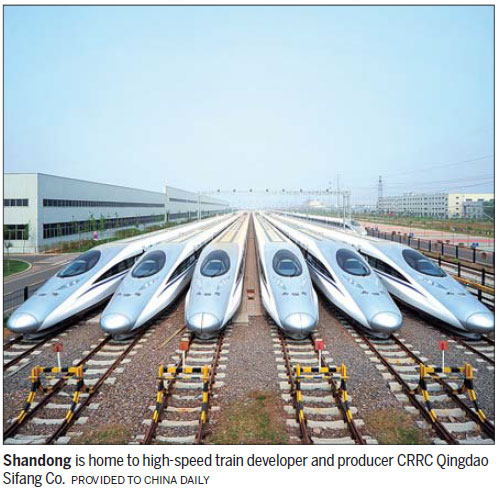Internationalization key to businesses' global outreach
By Tang Zhihao| (China Daily)| Updated : 2018-06-09
Print PrintShandong has achieved outstanding results in promoting internationalization and will continue to do so, officials said.
The province, which covers an area of 155,800 square kilometers, is known for its abundant natural, cultural and economic resources. It is the birthplace of Confucius and the home of Taishan Mountain. The Yellow River estuary also lies in Shandong.
The legendary Confucius has made a profound impact on Chinese society and the rest of the world. Official statistics show that 525 Confucius Institutes and 1,113 Confucius related courses have been launched in 146 countries and regions worldwide by the end of December.

Taishan Mountain, meanwhile, is a place of profound cultural significance and was a place of worship in ancient China. It has been a UNESCO World Heritage Site since 1987.
Shandong, which boasts invaluable culture and natural resources, is also economically one of the most prosperous regions in China.
It reported a GDP of 7.27 trillion yuan ($1.15 trillion) in 2017, ranking it third among the provinces and municipal cities in China. It also has a strong position in industries such as engineering machinery, transportation equipment, textiles and apparel.
Haier, headquartered in Qingdao, is one of the biggest home appliance producers and developers in the world. Its products are traded in more than 100 countries and regions.
The province's Tsingtao Beer is also a major global player. Established more than 100 years ago, it has expanded its sales network to more than 90 countries and regions.
Local corporate, China National Heavy Duty Truck Group Co, or Sinotruk, has successfully extended its sales network to more than 100 countries and regions. It has built 15 joint ventures in countries and regions involved in the Belt and Road Initiative.
"Sinotruk's products have gained high recognition in developing countries," said Chairman Wang Bozhi. "We are exploring opportunities in some high-end markets and have entered Australia, New Zealand and Brazil."
Shandong is also home to high-speed train developer and manufacturer CRRC Qingdao Sifang Co.
Shandong is taking a significant role in supporting the nation's economic upgrade. The region became the first comprehensive pilot zone in China to replace old economic growth drivers with new ones. A fund to do so, with 40 billion yuan in capital, was established by the Shandong government.
According to Shandong's latest regional development plan, closer attention will be paid to five emerging sectors: the next generation of information technology, high-end equipment manufacturing, new energy and new materials, the ocean economy and healthcare. It will also promote high-end chemicals manufacturing, modern agriculture, culture and creative endeavors, quality tourism and the development of modern financial industries.
Shandong, with strong manufacturing potential, has become an ideal investment hub for Fortune 500-listed companies such as Google and Apple.
Fortune-500 listed companies launched 63 new projects in Shandong in 2017, with total investments of 28 billion yuan. These companies, from 14 countries and regions, are engaged in industries such as modern services, high-end equipment manufacturing and environmental protection.
Statistics from the Department of Commerce in Shandong province show that the influx of foreign capital reached 78.7 billion yuan in 2017, a year-on-year increase of 8.5 percent.
Shandong has been actively promoting the Belt and Road Initiative over the past few years.
"At the intersection of the Silk Road Economic Belt and the 21st Century Maritime Silk Road, Shandong has unique advantages in promoting China's opening-up and strengthened cooperation with domestic partners," said She Chunming, head of Shandong's Department of Commerce.
"The Belt and Road Initiative builds a new platform for companies in Shandong to seek opportunities in global markets," She said.
The official revealed that Shandong invested 10.06 billion yuan in countries and regions involved in Belt and Road Initiative in 2017, a year-on-year increase of 81.7 percent.
Shandong officials said that the province will build a number of infrastructure and cooperation platforms by 2020, to encourage the arrival of more multinational companies and establish some overseas industrial parks.
They estimated that in the coming years the average annual growth rate for exports and imports between Shandong and countries taking part in Belt and Road Initiative would be 5 percent. Shandong's direct investment would also grow about 15 percent per year in upcoming years, officials added.
tangzhihao@chinadaily.com.cn
(China Daily 06/09/2018 page6)

 Insights from the 10th Nishan Forum
Insights from the 10th Nishan Forum  Confucian culture thrives: Integrating its wisdom into modern value
Confucian culture thrives: Integrating its wisdom into modern value  Confucianism's enduring influence: Shaping East, Southeast Asian civilizations
Confucianism's enduring influence: Shaping East, Southeast Asian civilizations